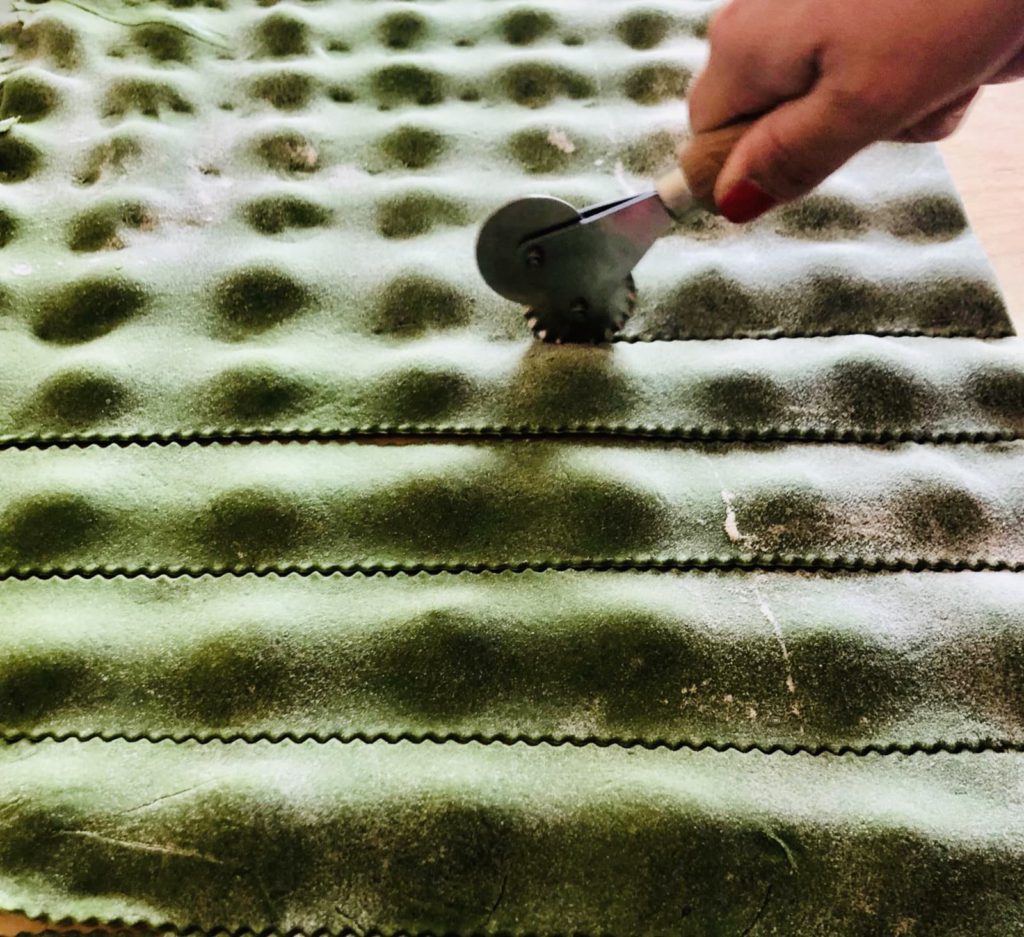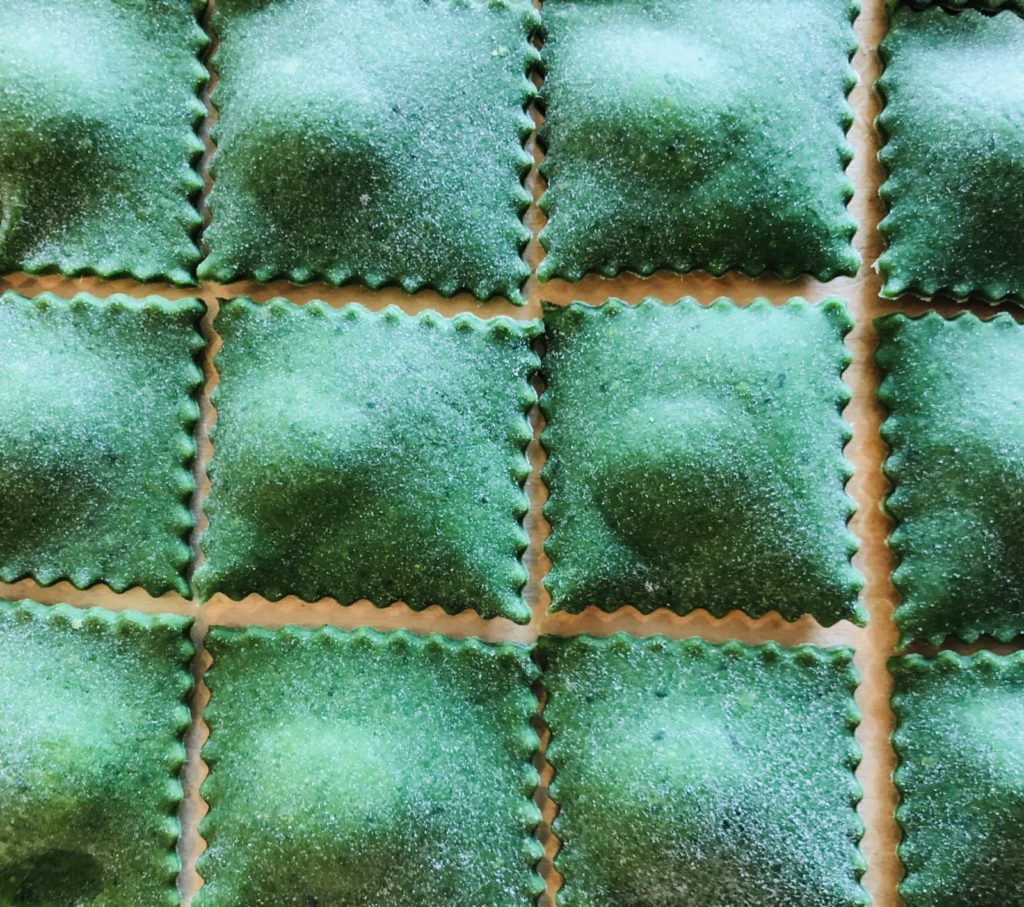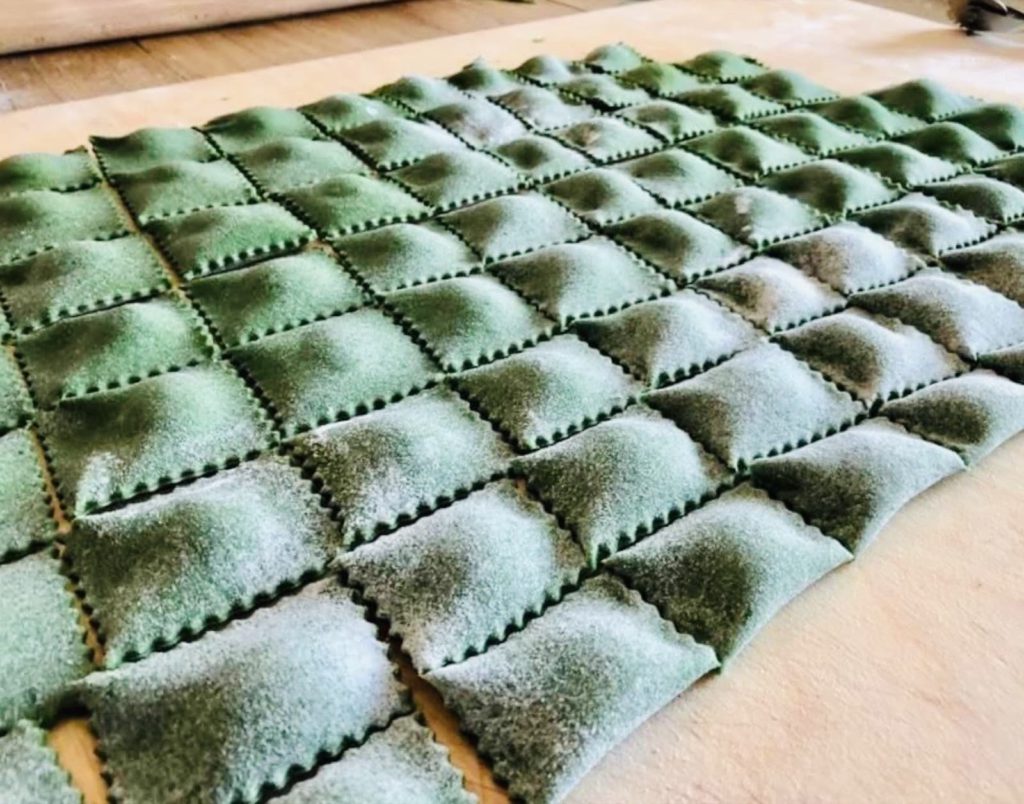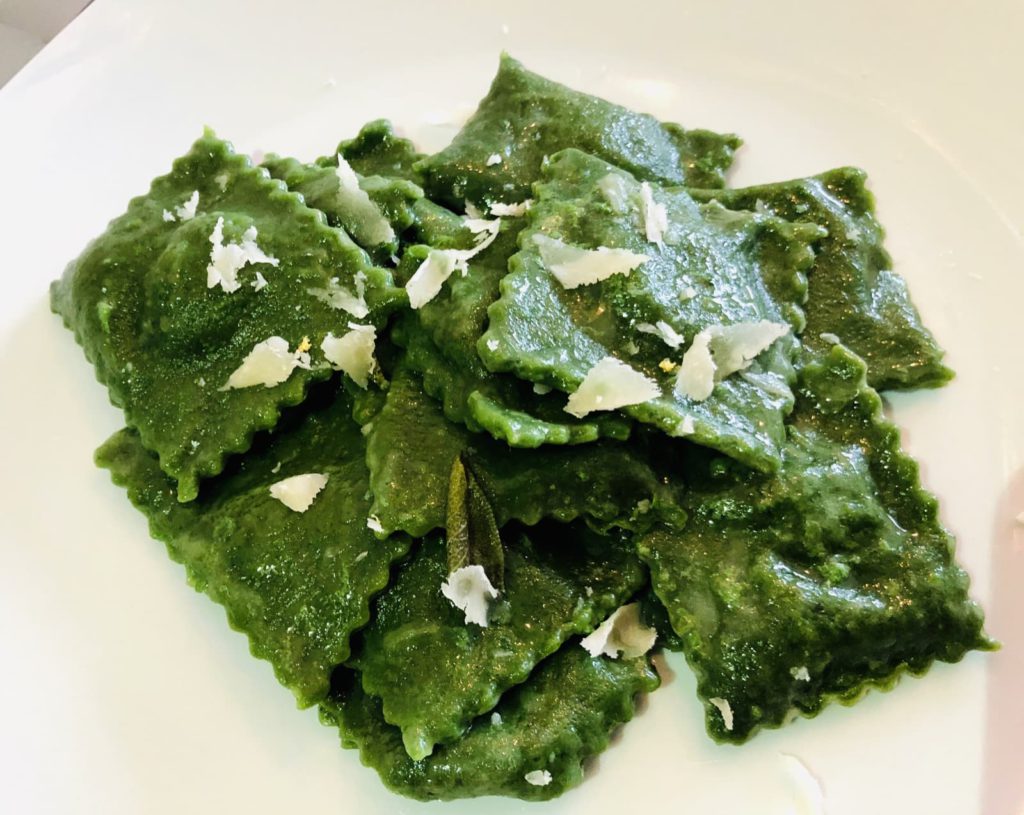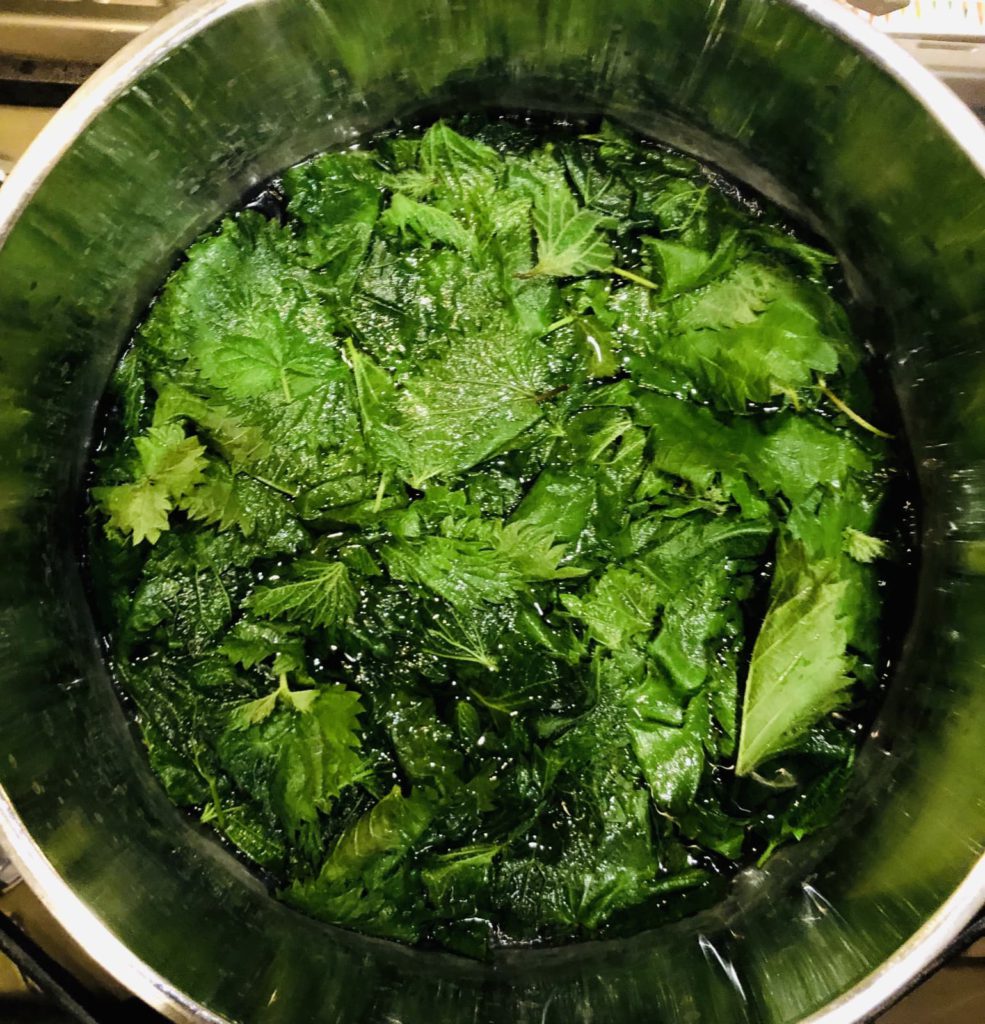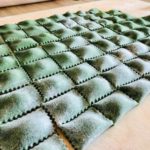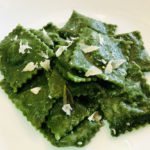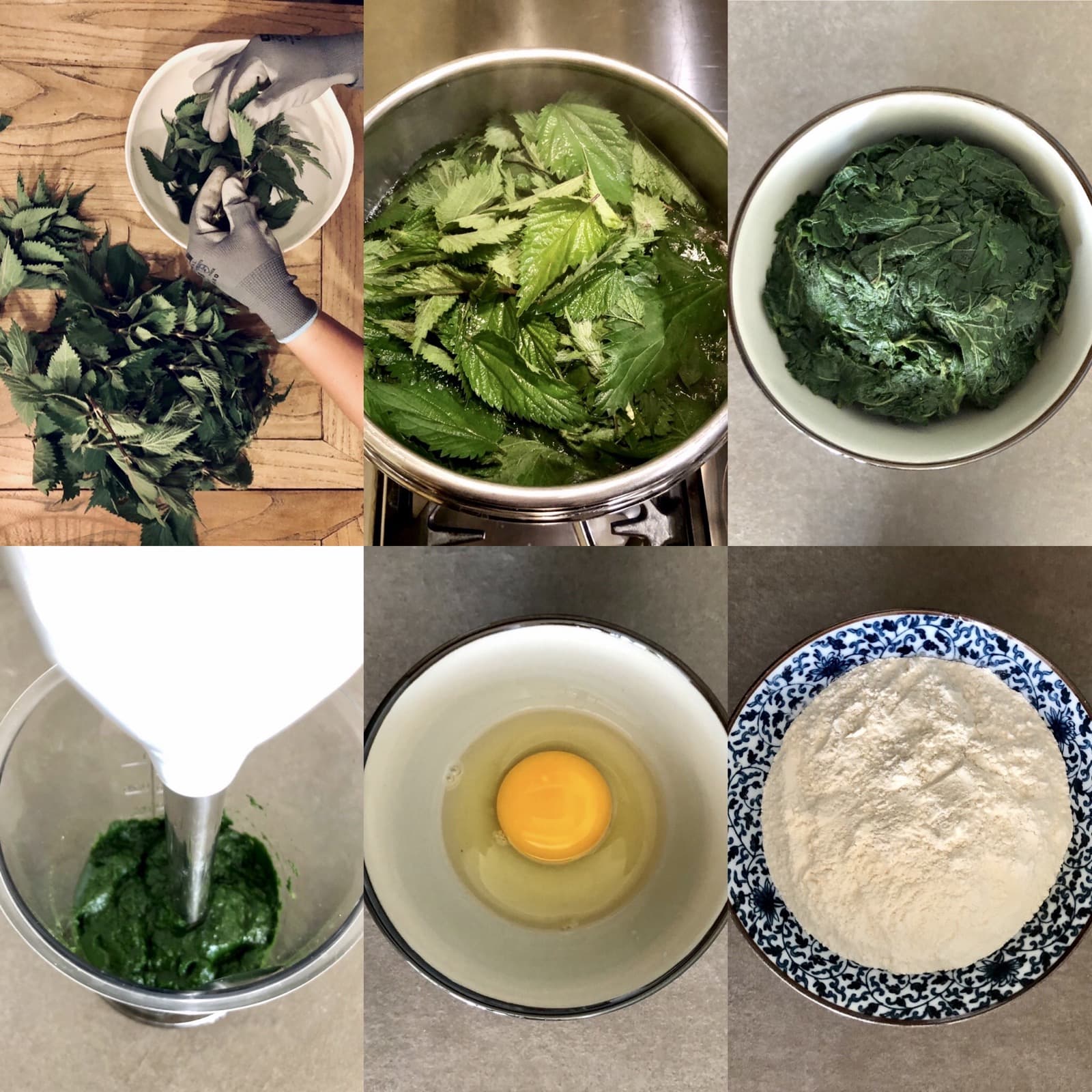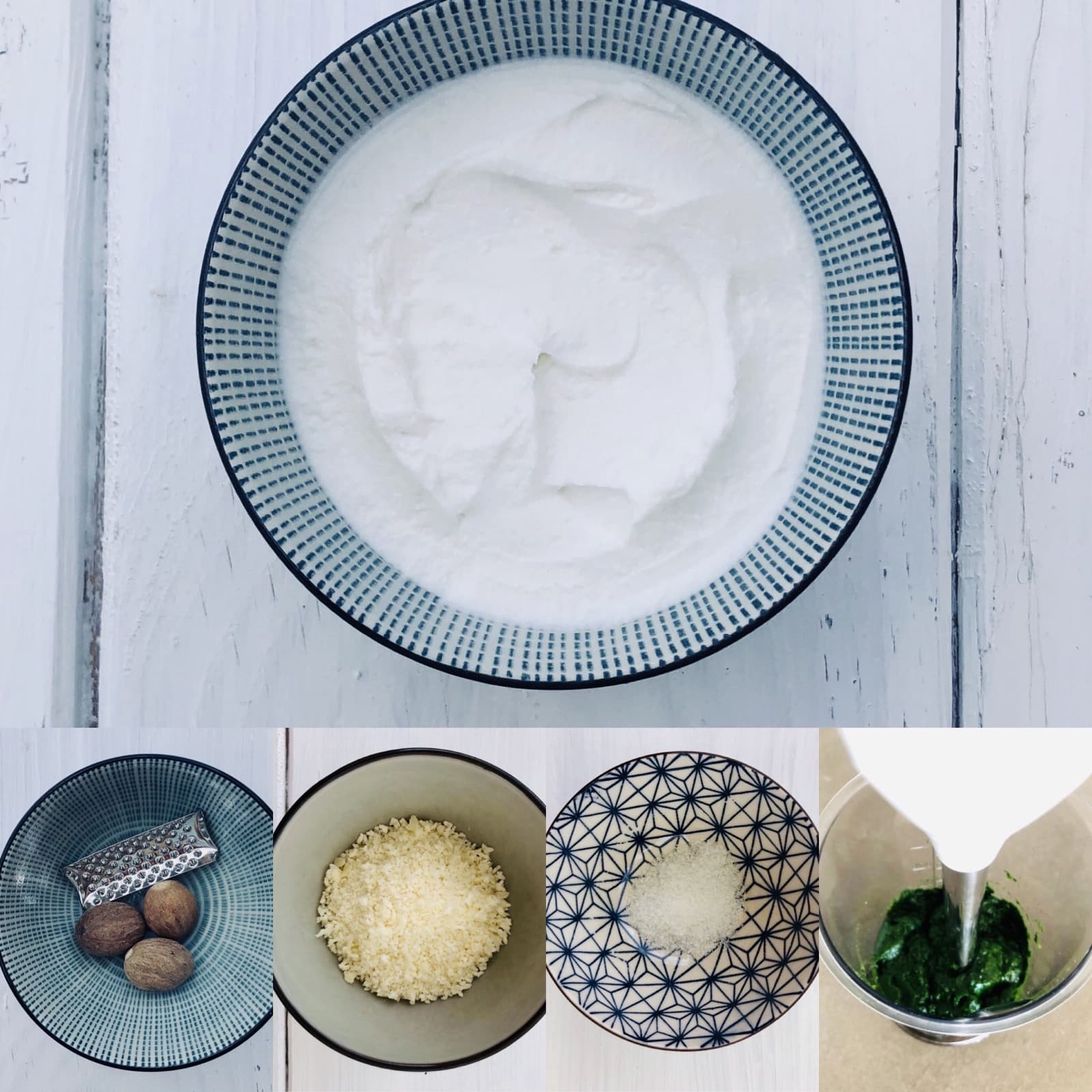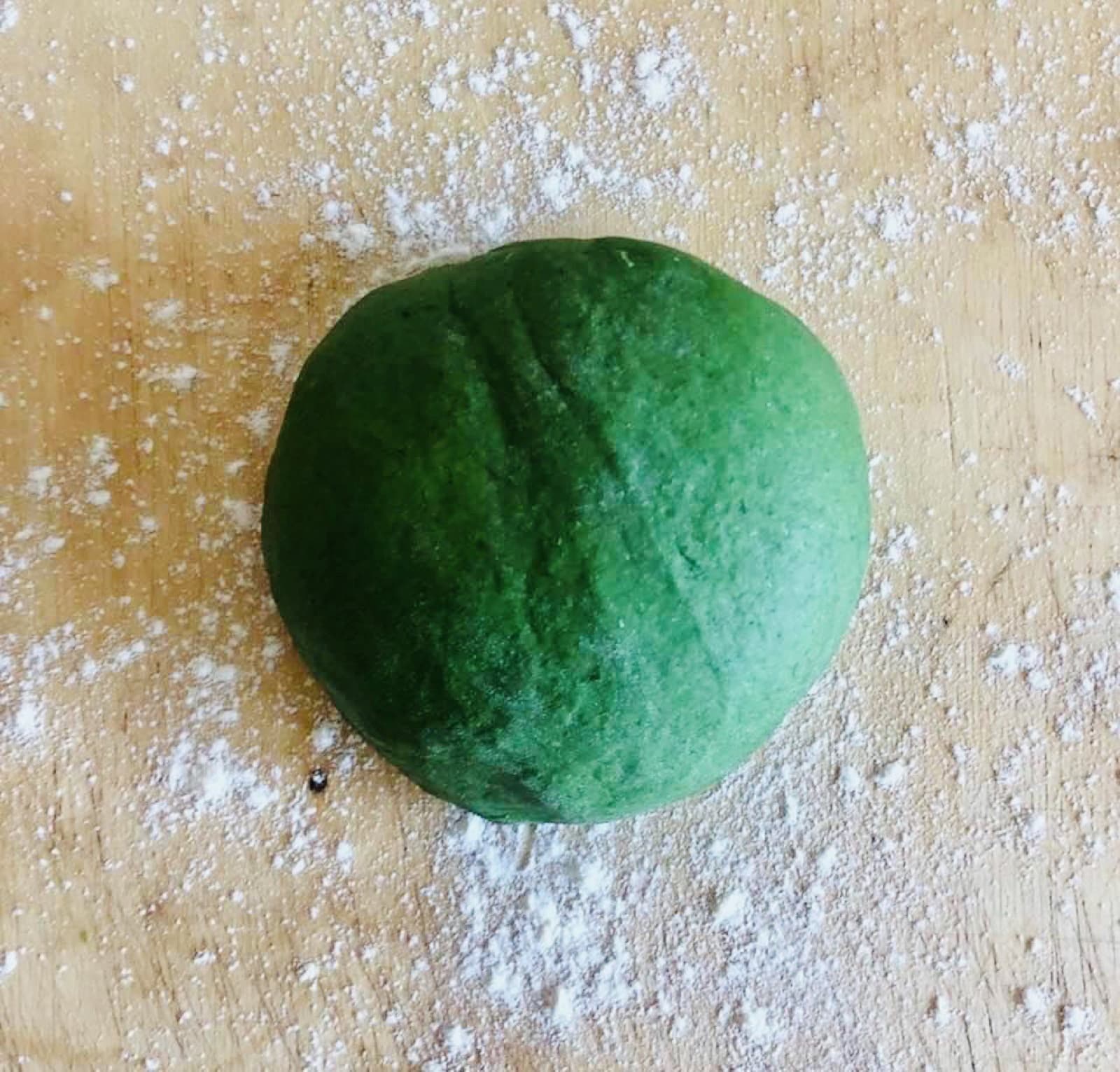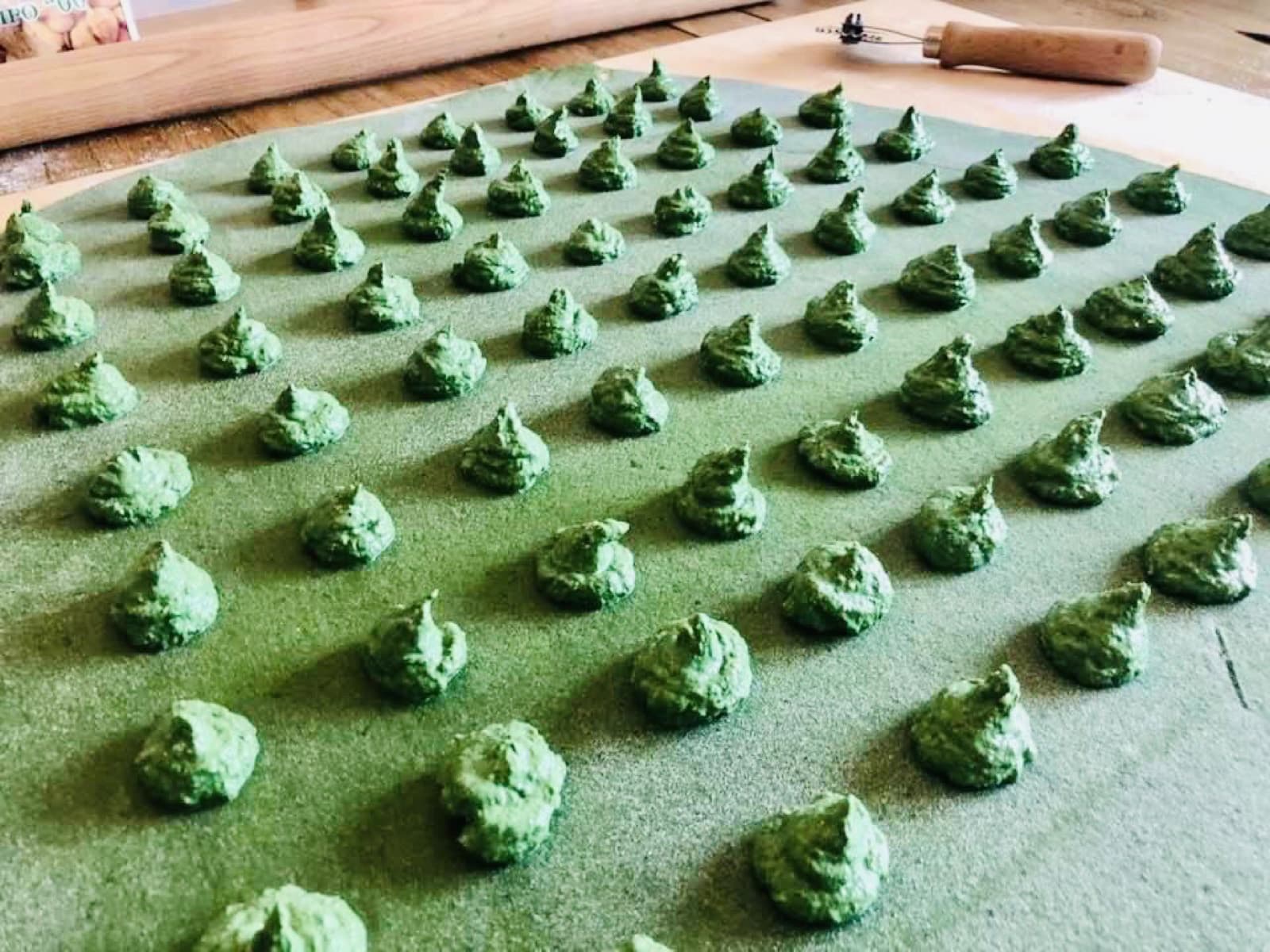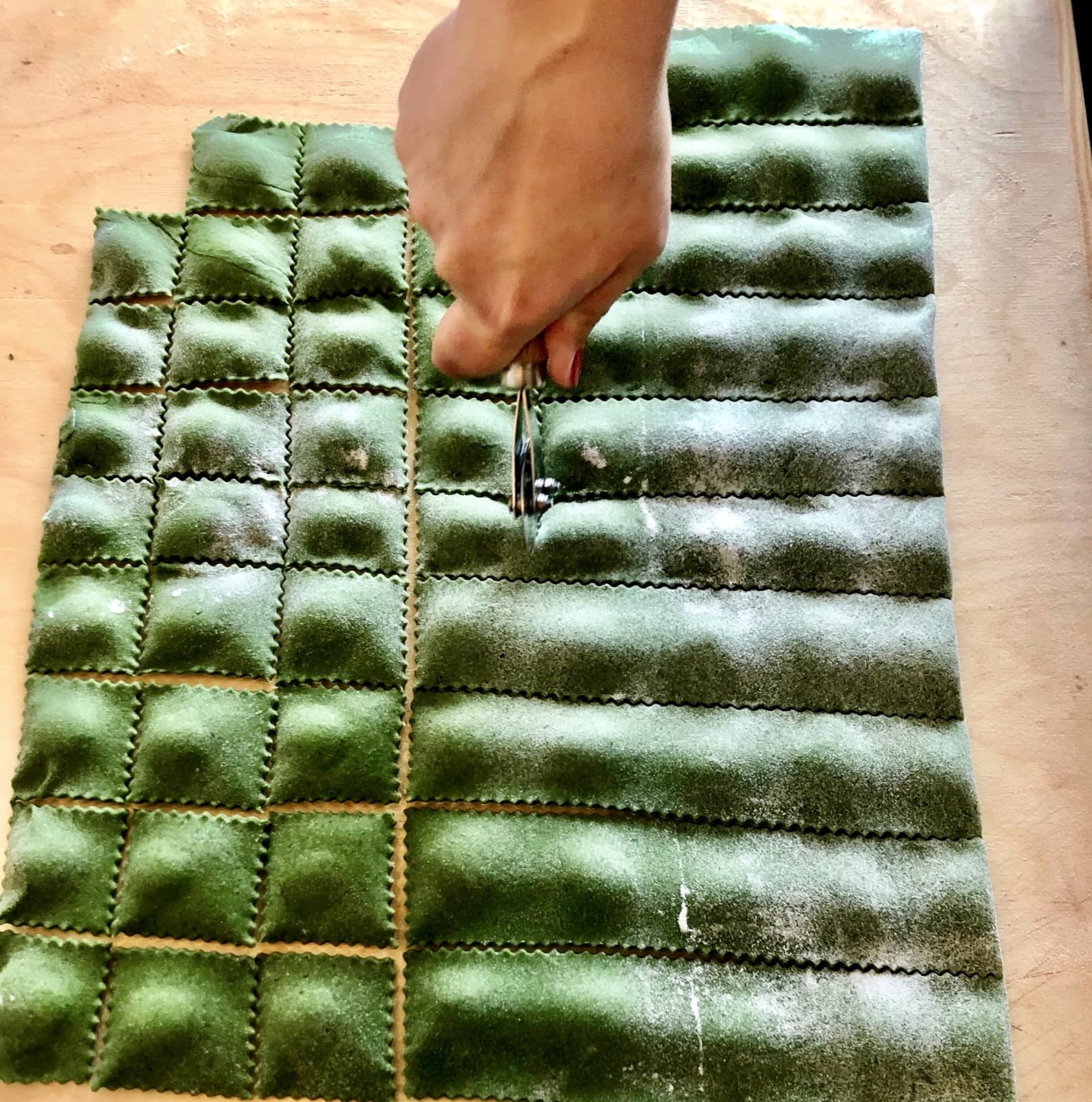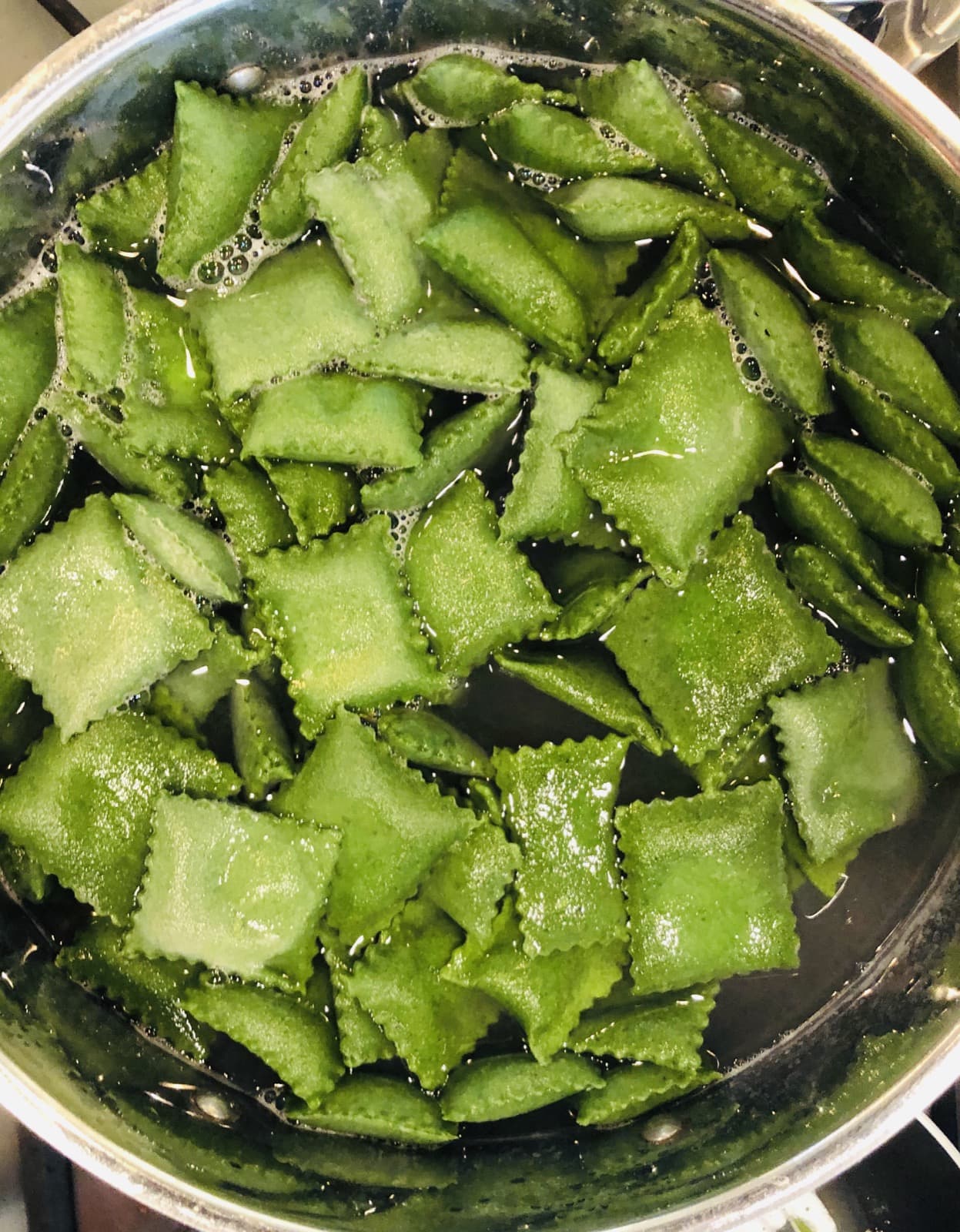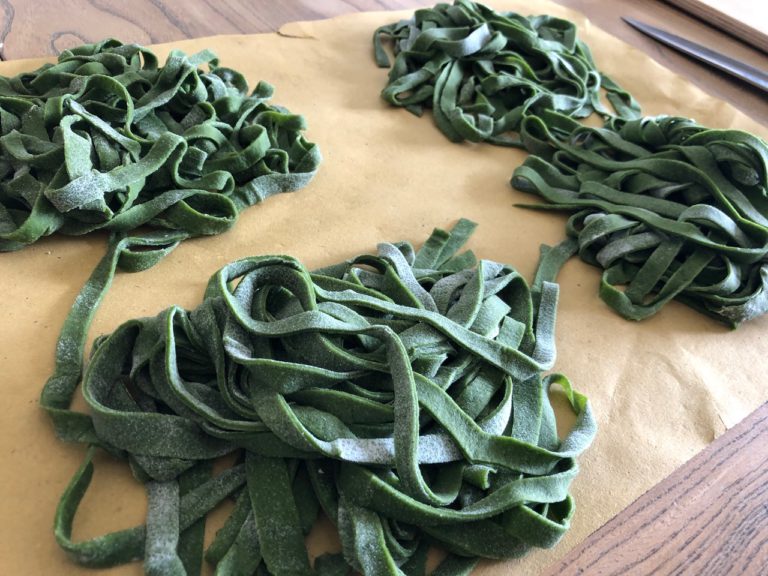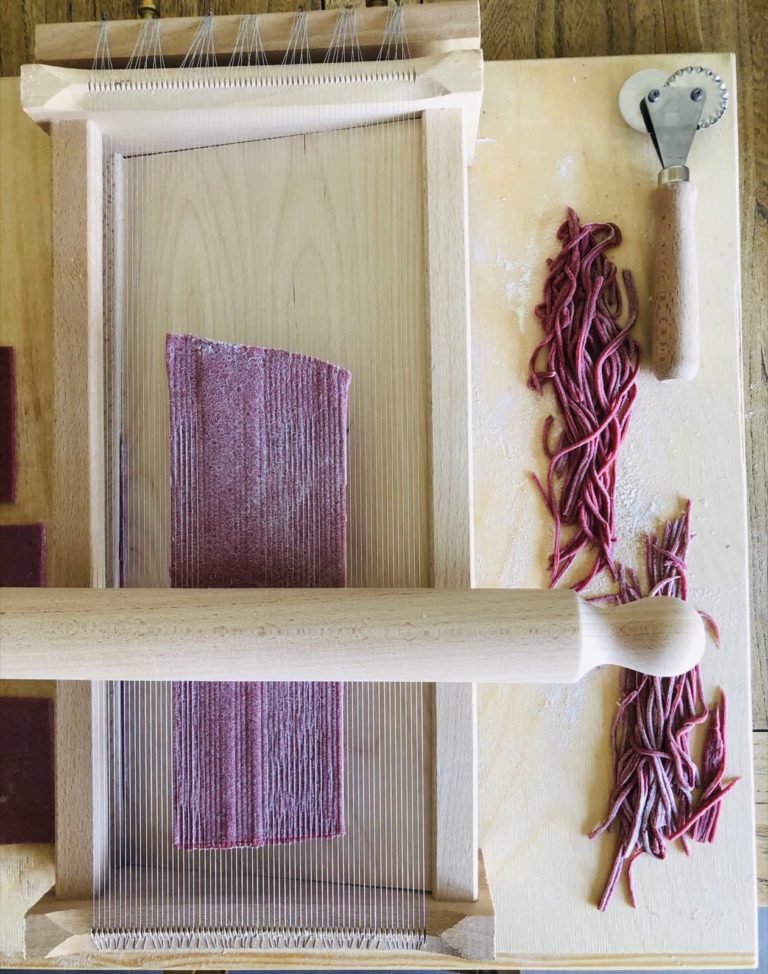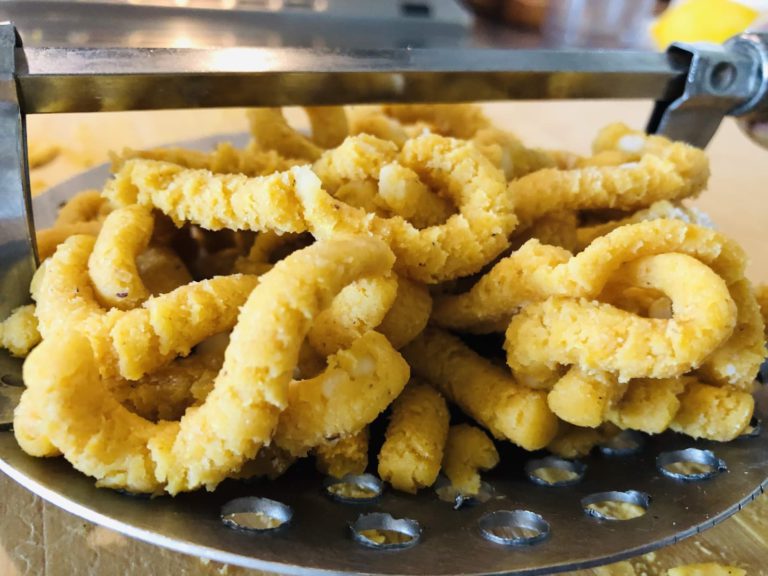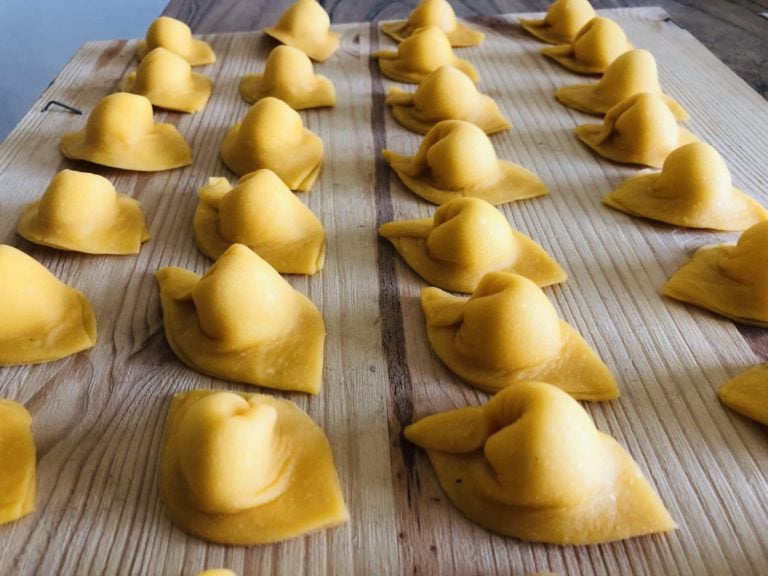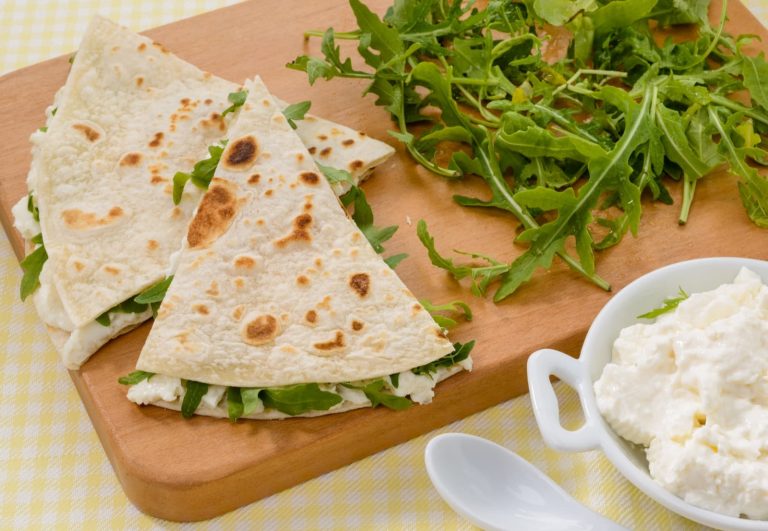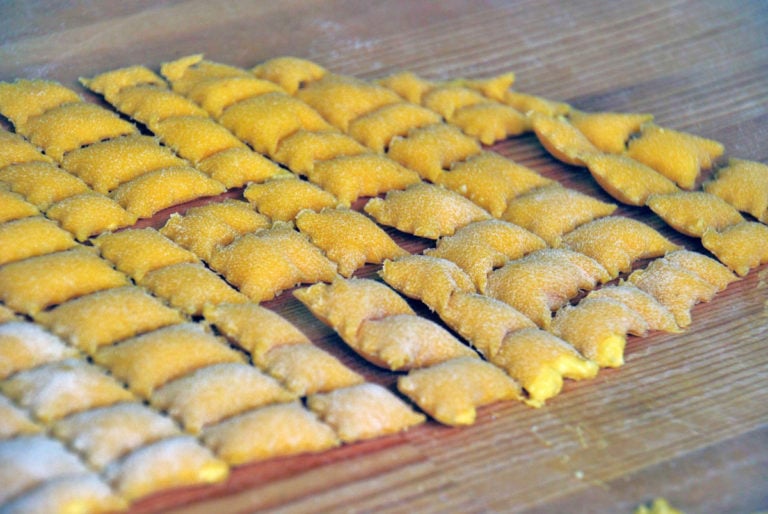The advantage of living in the middle of nature is that I’m appreciating things more: my evening walking around the farm and the connection with all the beautiful flowers, the herbs and the majestic trees along the pathways.
The hero of today’s recipe is, in fact, one of the most common herb around here: Nettles!
They are best picked young and fresh and what’s better than to use them for a Pasta Dish: RAVIOLI with Nettles and ricotta cheese!
Let’s make them together, I promise you will not regret it!
Ravioli Recipe Ph. FedeCortezzi
Ravioli Recipe Ph. FedeCortezzi
Ravioli Recipe Ph. FedeCortezzi
Ravioli Recipe Ph. FedeCortezzi
Ravioli Recipe Ph. FedeCortezzi
Recipe
Ingredients
PASTA DOUGH
4 medium eggs
340g flour 00 kind (+ 120g flour after mixing the nettles)
160g cooked nettles
NETTLES
pick the top part where the new leaves are growing. Do use gloves (of course!) to collect the nettles to avoid skin rash.
FILLING
160g cooked nettles
250g of ricotta
30g of Parmigiano Reggiano
Nutmeg to taste
1 pinch of salt
Preparation
NETTLES
Wash the nettles in water and baking soda (a pinch). Boil them in water until the leaves will be smooth and soft. Rinse them and make sure no water remains from the cooking process. Use a blender to make a cream with the nettles. You will use for both Dough and Filling.
DOUGH
Place 340g of the 00 flour into a large wooden board (if you have you can use the pasta mixer to save time). Pour the remaining 120g of flour into a small bowl, ready to use when necessary.
Shape the flour into a volcano with a large hole in the centre, then crack the eggs into the middle.
Using a fork, lightly beat the eggs, then mix in the flour a little at time. Now add the nettles cream and keep mixing till it is completly integrated.
It is essential that the flour is gradually beaten into the eggs to ensure the walls of the volcano don’t break too soon. Add the rest of the flour (120g).
If the dough is still too moist consider adding a bit more flour. Remember always to add the flour gradually for having a soft dough (if it is too dry you will not be able to work the dough with the rolling pin later).
Bring the mixture together with a spatula and your hands until you obtain a consistent ball of dough. Work the dough with the heel of your hand for 10–15 minutes (until the mixture is smooth, not sticky and very elastic). Wrap the dough in cling wrap and let it rest for at least 30 minutes.
Meanwhile, prepare the filling. Use the remain part of Nettles cream and mix it with Ricotta, Parmigiano Reggiano, salt and nutmeg. Set aside in the fridge.
Dust a wooden board with 1 tbsp of flour. Unwrap the dough and flatten it with a rolling pin. Roll out the dough into thin pasta sheet, 1.5-2mm thick. (If you have a pasta machine, divide the dough into 4 before rolling it out).
Meanwhile transfer to a piping bag (or using a table spoon and a fork) the filling you have previously made and pipe on the dough a small amount of filling (around a teaspoon) as per attached photo.
Cover them with the remaining half of dough, carefully press it to remove any trapped air.
Using a pasta cutter (it was my grandma’s one) start making Ravioli into squares.
You can let the ravioli sit out for a couple of hours but for more than that you should refrigerate.
COOKING
Bring a large pan of salted water to the boil, then add the Ravioli and cook for 2–3 minutes (as soon as they raise they are ready).
Drain carefully, then transfer to a frying pan with a little melted butter with sage and mix them together until tender and golden (it is not necessary to put them back in the fire but mixing them just naturally). To serve sprinkle over some freshly grated Parmigiano if you like.
Food History
The origin of this famous Italian staple food dates back to the 14th century.
The recipe for traditional Italian ravioli mainly features mixed green herbs, fresh cheese, and beaten eggs all simmered in a broth. Classic Italian ravioli is square-shaped where each side is about 4 cm.
In ancient Italy, these tiny dumplings were served every Friday and also during the solemn religious observance of Lent.
They are known and widespread in many parts of the world and there are many variations such as baozi, Chinese ravioli. There is also the sweet version of ravioli with ricotta cheese and sugar, sprinkle with icing sugar.
Ravioli are the kings of stuffed pasta but they change their name from region to region and from shape to shape: in Piedmont and in the Pavia area they are reduced in size and are called agnolotti (or agnellottitortelli and their shape looks more a cap; in Liguria they are called pansotti; in the Piacenza area they are called anolini while in the Ferrara area cappellacci.
Everybody likes ravioli, making all agree, from north to south, from east to west, from taste to taste.
There are four possible fillings for this type of pasta: meat, vegetables, fish or cheese.
Clearly, for each of the fillings there is a different procedure, also based on the sauce that you want to combine.
This is the secret of the raviolo: the love for a stuffed pasta that, although the transformations the evolutions and the different versions, remains an immortal culinary specialty.
Check also the Recipe RAVIOLI ALL’USO DI ROMAGNA by Pellegrino Artusi, Nr.98 (Science in the Kitchen and the Art of Eating Well – Book).
But let’s discover the story together.
ANCIENT TIME
At the time of the ancient Romans there was already a kind of ravioli: it is in fact the so-called Apicius pie, the patinam apicianam sic facies.
About the name there are many conflicting opinions. In fact, from the interpretation of medieval texts the term raviolo could have been a synonym of tortello, precisely an egg-shaped filling wrapped in pasta cooked in broth or fat. Moreover, others claim that the name takes its origin from the word rabiola, that was a small turnip. For other people it comes from the word rovigliolo, a tangle understood as a filling.
Although we have not clear sources that could confirm us one of the previous versions, there is the most accreditated theory that claims that the first raviolo was conceived in Gavi Ligure at the time of the Republic of Genoa by a certain cook Ravioli, a name still existing in the area.
After all, the ravioli are the only stuffed pastas known in the 12th and 13th centuries.
Also, it is reported in a written way on a contract of the end of 1100 on Paesaggio agrario in Liguria: it is in fact a colonist from Savona who undertakes to provide the owner with a meal for three people consisting of bread, wine, meat and ravioli, during the harvest period. In 1200 the ravioli started spreading in Genoa, also thanks to the trade exchanges of the fairs.
Consequently, the raviolo then reaches Parma at the end of the century according to what is reported in the chronicle text of Fra Salimbene.
In the mid-fourteenth century, moreover, the great writer and poet Boccaccio included the ravioli in The Decameron, in the third story of the eighth day, describing him among the delicacies of the land of Cuccagna (Cockaigne): “… he was a people who did nothing but make macaroni and ravioli and cook them in capon broth …”.
Certainly, the most common ingredients for the preparation of ravioli are ricotta, spinach and nutmeg.
Author

Fede’s Food Blog
Passionate for food & travel, I loved living in China for 12 years and exploring a different culture. I had the opportunity to discover new flavors and unknown ingredients in the cooking process and became inspired in my own recipes. Tradition though is still an important part of my life. Tradition is the origin of my passion, it’s where everything came from: looking at my Nonna cooking in a tiny kitchen in a little village in Italy’s Emilia-Romagna Region is where my love of food was born.
Communication is another important asset of my philosophy: I love photography. I believe images have strong communication power in creating emotions. That’s why recipes will always be introduced by photos of my creations. Looking at pictures of my dishes will be a travel in time and space, entering the kitchen and enjoying the taste of authentic Italian creations.
You may also like

Interested in our newsletter?
Every first of the month, an email (in Italian) with selected contents and upcoming events.
Back to the origins of Piadina, Romagna’s best street food
by Walter Manni /// March 20, 2019
